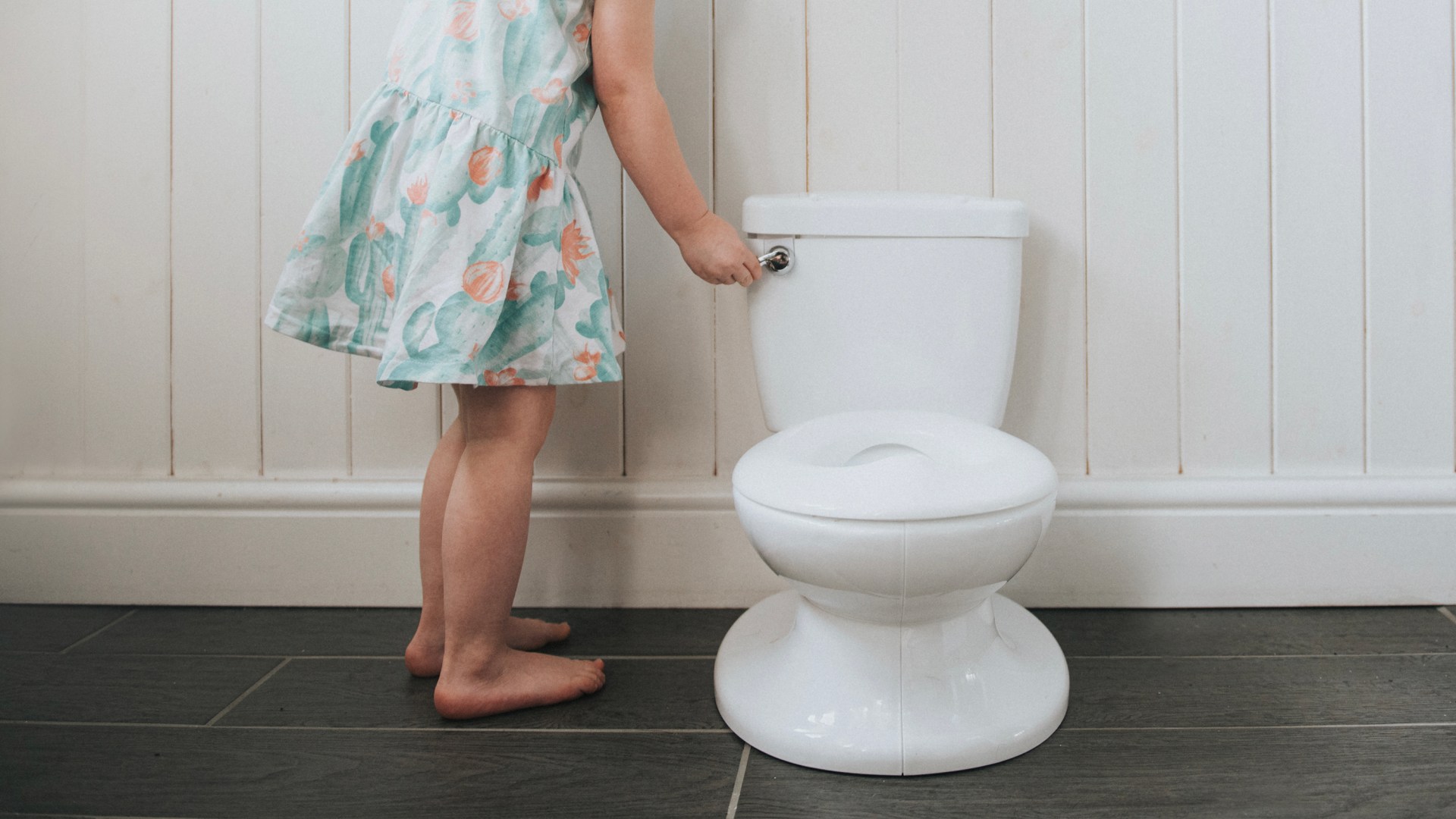Every Sunday, I load up my cargo bike with our two girls, their snacks, a few spare diapers, board books about Jesus, and finally, a bright pink potty. Toilet training has gone as well as can be expected, but my little girl is still too small to use a grown-up toilet.
I can see how much easier it is for her to use the child-sized, real-plumbing toilets at her school, but we don’t have the same option at church or at home. It’s made me take a speculative look at the bathroom in our house, wondering what it would cost to install one and how many children I’d need to have for it to be “worth it.” I’ve seen grab bars for stability in other families’ bathrooms, even when no one in their home is currently injured or elderly, and I think a small toilet would be a similar sign of welcome. A hospitable home is one that can accommodate a variety of guests, with a range of bodily abilities and needs.
What about a hospitable church? Though church buildings are a public space, they’re exempt from the disability accommodations covered by the Americans with Disabilities Act (ADA). And anyway, the physical needs of children—and pregnant women, for that matter—aren’t covered by the ADA, for though they may entail similar challenges of accessibility, neither childhood nor pregnancy are legal disabilities.
But even without a legal mandate, church should be a place where children’s needs are met. “Let the little children come to me, and do not hinder them, for the kingdom of heaven belongs to such as these,” Jesus said (Matt. 19:14). And we try, but our efforts are usually more behavioral, like tolerating noise in the pews, than structural, like reconsidering the overall design of the church.
Yet, after her preschool, church is the most child-dense place my three-year-old goes. And a church will keep hosting children for as long as it’s open, while I expect I’d have to remove a child-sized toilet from my home if we decided to sell. We’re happy to have a lively, family-filled parish that’s very welcoming of children’s joy (and their noise). So if there’s no accommodation here, why not?
There’s no national survey on children’s toilets in church buildings, of course. But I raised the question to my X (formerly Twitter) followers in an informal poll, and most respondents said their church has no specific bathroom accommodations for little children. Few said their church has a training potty—the kind you empty into the toilet—and even fewer reported their congregation has a real, tiny toilet hooked up to the plumbing. But in many of those cases, the toilet was often there because the church operates a childcare center in the same complex, which raises the question of whether it would’ve been installed for the congregation alone.
Revealingly, when I asked a follow-up question about whether respondents would consider asking their pastor or priest about adding a training potty—or if they’d stealth-donate it and hope everyone assumed it was official—people favored secrecy by a 2:1 margin.
Whether that was because the donation wouldn't feel like a big deal or because it might be rejected, these results accurately reflect where many church communities land on this question.
When churches are built or renovated, they often bring in someone like Will Seath, a project architect with McCrery Architects, a firm based in Washington, DC, with an expertise in the design of Catholic churches. Seath has never encountered a community that considered adding a child-sized toilet, he told me in an interview by phone. On the contrary, most clients try to minimize bathrooms because they’re the most expensive rooms per square foot. Churches usually want the fewest possible toilets required by law, and a working child-sized toilet costs money but doesn’t count toward that official tally.
For Rev. Topher Endress, who pastors a Christian Church (Disciples of Christ) community in Columbia, Missouri, adding accessibility is often a matter of iterative change. He serves in an older stone building, where congregants in wheelchairs can’t come up to the altar. It’s a problem Endress hasn’t yet been able to fix, but he has trimmed pews across the church, making space for wheelchairs. Now, congregants with mobility aids can pray throughout the sanctuary instead of being relegated to a special section in the back.
Endress thinks children face obstacles parallel to those of disabled congregants—their bodies are treated as aberrant and unexpected—though he’s hesitant to draw too direct an analogy. “I think it’s a really helpful frame,” he said, “but I think it’s unhelpful to name it,” because, for people with disabilities, comparisons to children can feel less like solidarity and more like dismissal or condescension. “People treat people with disabilities as if they were developmentally a child,” Endress said. “Any linkage between children and disability feels a little bit fraught.”
His PhD was on disability and ecclesiology, and Endress moves easily from theory to practice. On the phone with me, he gamely began exploring the bathrooms, checking how family-friendly they were. The sinks had cutouts to make them accessible for wheelchair users, he said, and little stools were tucked underneath for children. But to find a child-sized toilet, families would need to go to the attached preschool.
Endress began musing about adding toilet seats that have a special, child-sized attachment, and, like my X respondents, he leaned toward a stealth approach. “If I were making the switch,” he told me, “it would just be something I would do, and probably not tell anyone, and they would be fine with it.”
If a congregant wanted to make the proposal, though, the process would be more formal. They’d send the property committee an email, and there would be a meeting to decide.
Would it be approved? I tested how easily this kind of accommodation might be secured at my own parish, asking a priest if I could donate a little toilet stepladder, which gives children stairs to reach the top of the potty, and a smaller, more proportional seat for when they get there. He politely declined.
The entryway toilet is already a difficult place to manage, he told me, with the wrong things getting flushed and too-frequent calls to the plumber. Adding anything new felt like borrowing trouble.
So, for now, the little potty will keep riding with us. During Mass, I leave it at the back of the church, right next to the narthex bathroom, and make sure it’s appropriately emptied and cleaned. If another parent finds it and assumes it’s an official act of church hospitality, I won’t correct them.
Leah Libresco Sargeant is the author of Building the Benedict Option. She runs the Substack community Other Feminisms.












